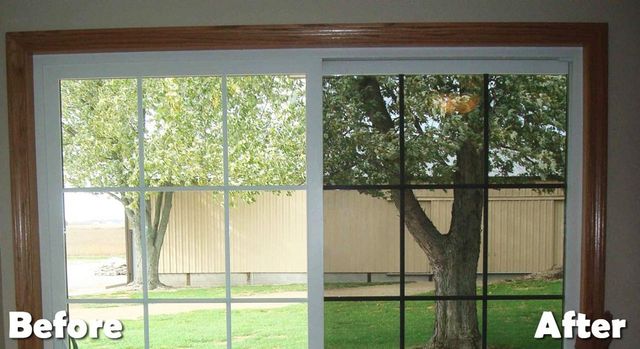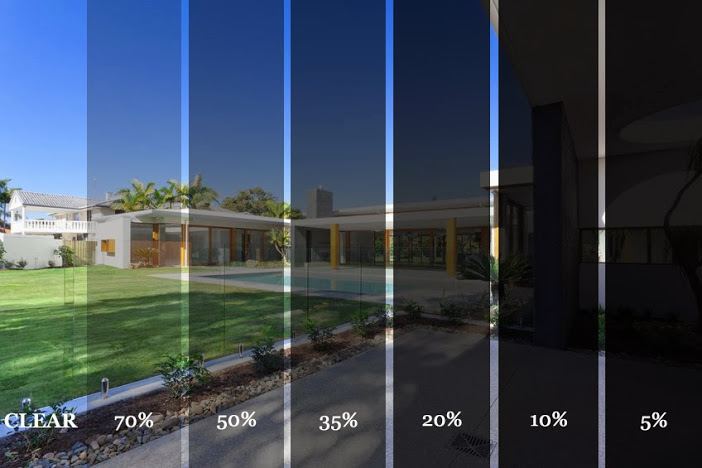Residential Window Tint for Large Windows: Maintain Comfort and Style
Residential Window Tint for Large Windows: Maintain Comfort and Style
Blog Article
Exactly How Residential Home Window Tinting Enhances Your Home's Power Effectiveness
Residential window tinting provides a compelling option for property owners looking for to improve power effectiveness within their living spaces. By applying specialized movies to windows, it properly decreases warmth transfer, thus maintaining indoor temperature levels and reducing the requirement for excessive heating or air conditioning. This not only cuts power usage yet additionally gives a more comfy environment by reducing glow. However, comprehending the subtleties of how tinting works and picking the appropriate type for your home can be crucial. Curiously, what elements should one take into consideration before making this investment?
Comprehending Home Window Tinting
Recognizing home window tinting is crucial for homeowners seeking to enhance both comfort and energy efficiency in their space. Residential Window Tint. Window tinting involves the application of a slim movie to the inside or outside surface area of glass home windows. This film can considerably modulate the amount of sunlight and heat that gets in a home, hence affecting interior climate conditions
There are different sorts of window tinting movies readily available, each with unique buildings. For example, colored films absorb solar power, while reflective movies disperse it away from the glass surface area. Ceramic movies supply an equilibrium of exposure and heat denial, making them a prominent option among home owners. The performance of window tinting is frequently gauged by its Visible Light Transmission (VLT) percent, which suggests how much light can pass via the film.
Advantages of Energy Effectiveness
Window tinting not just enhances appearances however additionally plays a considerable duty in enhancing energy efficiency within household rooms. By reducing warmth transfer through windows, tinted movies create an extra stable interior environment, which can result in substantial reductions in power intake for heating & cooling. This power performance translates into lower utility costs, supplying homeowners with considerable lasting savings.

Additionally, home window tinting improves the comfort of living rooms. By decreasing glare and blocking unsafe UV rays, colored windows develop a more pleasant setting, which can result in improved health for residents. The defense versus UV rays also aids preserve furnishings and flooring from fading, adding to the longevity of house products.
Just How Tinting Works
Tinting movies operate via a combination of innovative materials and modern technologies created to control the amount of solar he said power entering a home. Mostly composed of polyester, these movies commonly incorporate ceramic or metal bits that mirror and absorb warm. This dual capacity enables them to dramatically decrease the infiltration of ultraviolet (UV) rays and infrared radiation while allowing noticeable light to go through.
The performance of home window tinting is measured by its solar warm gain coefficient (SHGC), which shows just how much solar power is sent through the home window. Reduced SHGC worths are more suitable as they signify better heat being rejected. In addition, home window tints can feature a range of tones, permitting homeowners to personalize their aesthetic choices while boosting power effectiveness.
Additionally, these films function as an obstacle, protecting against heat loss during chillier months by showing indoor heat back right into the living room. This thermal insulation result enhances the cooling benefits gained during warmer months, contributing to a balanced indoor climate year-round. By managing solar power efficiently, pop over here domestic window tinting not only improves comfort but also plays an important role in decreasing energy consumption and lowering utility costs.
Picking the Right Color

There are various types of window films offered, consisting of colored, metalized, and ceramic. Ceramic click here to find out more movies provide outstanding warm control without compromising presence and are highly resilient, making them a prominent option.
Noticeable light transmission (VLT) is one more vital variable, as it shows the quantity of all-natural light that can pass through the tinted glass. Homeowners should select a tint with a VLT that complements their lighting preferences while still providing adequate glare decrease.
In addition, analyzing the solar warmth gain coefficient (SHGC) can aid establish just how well a color can block heat from sunlight. A reduced SHGC shows far better warm control, eventually improving energy efficiency.
Installment and Maintenance Tips
Proper setup and upkeep are important parts in taking full advantage of the advantages of domestic home window tinting. Professionals likewise make use of specialized tools and methods, which can boost the resilience and efficiency of the color.
Following setup, upkeep is important to extend the life of the home window film. It is suggested to wait at the very least thirty days before cleansing the tinted windows to enable the sticky to heal totally. When cleansing, utilize a soft cloth and a gentle, ammonia-free cleaner to prevent harming the movie. Avoid abrasive materials that might damage the surface area.
Addressing these concerns without delay can protect against additional damage and maintain power performance. By adhering to these installation and upkeep pointers, house owners can ensure their window tinting proceeds to offer significant power cost savings and comfort for years to come.
Conclusion
In conclusion, household window tinting serves as a reliable service for boosting energy effectiveness within homes. By lowering heat transfer and obstructing harmful UV rays, window movies add to lower energy intake and improved indoor comfort.
Home window tinting involves the application of a thin film to the inside or outside surface of glass windows. By decreasing warmth transfer via windows, tinted films produce an extra secure indoor climate, which can lead to significant reductions in energy usage for heating and cooling.The efficiency of home window tinting is determined by its solar warm gain coefficient (SHGC), which shows just how much solar energy is transmitted through the home window. By handling solar power successfully, domestic window tinting not only improves comfort however likewise plays an essential duty in lowering power intake and lowering energy costs.
By reducing heat transfer and obstructing hazardous UV rays, window films add to decrease power intake and boosted interior comfort.
Report this page